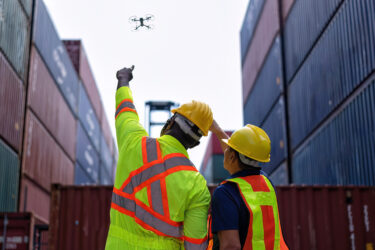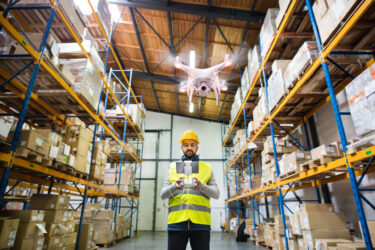

IoT has changed the face of healthcare and medical technology. As more smart devices are adopted, patients are receiving more personalized care and doctors are able to provide better treatment options. The possibilities don’t end there! We will explore how IoT is transforming MedTech and healthcare and services in this post, so you can understand what’s coming.
What exactly are IoT solutions?
You can imagine any type of device that has a sensor embedded on it to be an example. There are several different technologies available for connecting all of these devices together, such as Wifi or Bluetooth. Users can access a lot of information about themselves and other people by connecting to these devices and integrating them with apps and other technological solutions.
Many companies are developing items for medical equipment that can be monitored remotely and tagged with a global positioning system (GPS) sensor.
What makes IoT so important for healthcare and Medtech?
Healthcare and MedTech are undergoing a major transformation due to IoT. The internet of things has changed the way we think about healthcare by revolutionizing how doctors provide services t patients. Many people don’t realize this, but the Internet of Things is not simply a ‘tool’.
It was customary in the past for medical devices to be sold as standalone products without any connection to other hardware or software. IoT in healthcare today is more open and connected than ever, bringing benefits to patients across a variety of industries, including medical technologies.
MRI machines, thermometers, and other medical devices are considered Medtech. Healthcare covers a wide range of areas and devices, which may be tightly associated with health or less so. IoT nowadays can power them all.
Benefits of IoT in Healthcare and MedTech
#1 Improved quality of care
IoT supports care and improves patient outcomes. Health monitoring is easier and more accurate than ever thanks to the Internet of Things, and the evidence is there.
For elderly patients with heart failure, the use of IoT has been shown to reduce mortality rates by as much as 30%. As a result of IoT, patients are also more likely to recover from illnesses or injuries more quickly, more fully, and just better. Through the use of IoT, health data can be remotely monitored, which can reduce readmissions and hospitalizations. Family members and medical providers are always kept informed of a person’s changing health status.
With the integration of IoT devices with apps, interactions between doctors and patients have become much easier, resulting in a higher level of satisfaction and engagement.
#2 Reduced costs
In addition to helping reduce health care expenditures, IoT can also help make medical facilities more efficient. As more processes are automated and those already in place are optimized, medical organizations can decrease operational costs. With smart IoT switches and bulbs, hospitals can lower their electricity bills.
On the patient side, IoT can also result in savings. The use of IoT devices to boost treatment can be more effective and help keep a routine and discipline, such as keeping a diet on track. It also can minimize the chances of complications, which could end up costing millions of dollars over time for all involved parties.
#3 Monitoring and management of staff and equipment
Using IoT, medical equipment and staff can be monitored. Thermometers or MRI machines may be simple instruments, or they may be more complicated ones.
This means that you can check in on your medical devices from anywhere and at any time. The moment something goes wrong with the device, you will be notified right away without waiting for someone else to notice. Patients can be quickly assessed to determine whether they require immediate medical treatment.
With this approach, dealing with patients who may need urgent care is a snap – they can always get in touch with help thanks to the constant connection.
Furthermore, hospitals can record and monitor their employees’ work schedules more efficiently, which will increase productivity. This can lead to improved customer service and reduced costs since it will be easier for clinics to coordinate patient records and appointments.
Compliance can also be improved. By using the Internet of Things, hospital monitoring can become easier, which may have a positive impact on patient compliance with prescribed treatments, resulting in fewer hospital readmissions and improved adherence.
It is also possible to track the location and performance of medical equipment using sensor-filled IoT devices. Furthermore, it supports medical staff dispatch in real-time, as well as taking care of asset management.
#4 Better staff efficiency
IoT will allow doctors to spend less time on paperwork (which is often inevitable with the sheer amount of information needed for billing) so that they can spend more time with patients. Additionally, this also means that doctors could use the extra free time to devote to research or education, allowing them to continue to develop professionally through continuous learning and keeping abreast of the latest developments in the healthcare field.
Nurses will be better able to anticipate (and prevent) problems that might arise with patient care by having increased visibility into other hospital departments. They can identify potential issues before harm is caused to patients receiving treatment. The result is that nurses are better able to serve their patients through coordinated care.

Are there any challenges of IoT in MedTech?
IoT technology must overcome many challenges to make an impact on the health care and medical industries. Privacy concerns are one example of the challenge. If patients’ personal information is collected by medical organizations, how will it be protected? Additionally, security issues are involved. What can organizations do to prevent data breaches caused by hackers? Security breaches have been occurring with alarming frequency; what steps can be taken to safeguard against these incidents?
Even though there are still many challenges posed by IoT technology for MedTech and healthcare, its benefits have been significant so far.
It is important to note that while there is no one-size-fits-all solution to securing information or protecting privacy, organizations can take measures to protect themselves. The steps may include improving encryption measures to secure networks against hackers. The end result will ultimately be a better experience for patients and providers alike.
With the growth of the Internet of Things (IoT), healthcare will gain new advantages that were not previously attainable. If you take a look at some of the examples below, you will see that this is only the beginning when it comes to what is possible.
MedTech and healthcare IoT use cases and examples
#1 Wearables
It has been shown that wearables like Fitbit can help diabetics and are changing how doctors monitor and treat them. Study results show that diabetes patients can manage their blood sugar levels more easily through the use of IoT devices (here – smartwatches come into play) and mobile applications thanks to continuous monitoring. In addition to reminding about routines and activities (e.g., taking medicine), wearables can also assist in maintaining motivation.
An analytics solution created by BioReference Labs collects patient data from wearable fitness trackers and provides insight on how patients respond to certain treatments and medications. As a result, many new options are available to optimize performance during recovery.
#2 Remote monitoring systems
An app-based remote monitoring system enables family members to check on their loved ones remotely. The sensors that monitor patients can also feed back data to healthcare providers remotely. Monitoring vital signs such as blood pressure via IoT technologies allows doctors to diagnose heart disease and chronic conditions more effectively, and more regularly, than during routine in-person visits.
#3 Improving life comfort
In addition to helping with health emergencies, the Internet of Things can track health and lifestyle on a regular basis.
By monitoring your sleep patterns in real-time, smart beds can detect if you’re restless at night (which could indicate something serious). They can improve sleep quality by providing personalized support during the night as well. A weight scale can identify anomalies and a smartwatch can remind you to log another meal. There are countless examples to choose from.
#4 Communication between patients and doctors
IoT devices, apps and integrations also streamline communication.
In order to help patients make informed decisions about their health, webMD Connect is designed to help them find the right doctor. As a tele-surgical system, WeRobotics assists surgeons by providing real-time access to patient data. In addition to the examples just given, there are numerous other aspects of effective communication that produce great results in this area.
#5 Getting the levels right
As part of the Internet of Things, devices and measurements integrate with the system so that constant health monitoring is possible for MedTech and healthcare industries.
A good example of this is the iHealth LabPro Digital Glucose Monitoring System. In addition to a wireless blood glucose meter that connects to an iPhone or iPad for easy storage of readings, the iHealth system also offers advanced reporting tools such as insulin sensitivity index (ISI), AUC glucose response curve metrics, and others.
Using MiniMed Connect, users can monitor their glucose levels at home. They can benefit from graphs and reminders to better manage their diabetes.
According to various research, using these kinds of devices can lengthen your lifespan even if you are not diabetic or have any other chronic diseases.
#6 Complex IoT Medtech and healthcare management suites
Additionally, more and more comprehensive solutions for IoT management are coming to market. Philips Healthcare uses IoT devices for everything from wound management to pulmonary rehabilitation. SmartCare is Siemens’ solution for industrial monitoring. It integrates wireless standards such as LoRaWAN and Sigfox technology into a network platform.
Over to you
MedTech and healthcare are controlled by a powerful ecosystem of vendors, insurers, doctors, hospitals, software developers, and others allworking towards a common goal – providing personalized health solutions for everyone.
We’re jusgetting started, though!
IoT solutions will continue to advance in the healthcare space. We hope you’ll take the time to learn more about it with our insights. Check DAC.digital solutions.




